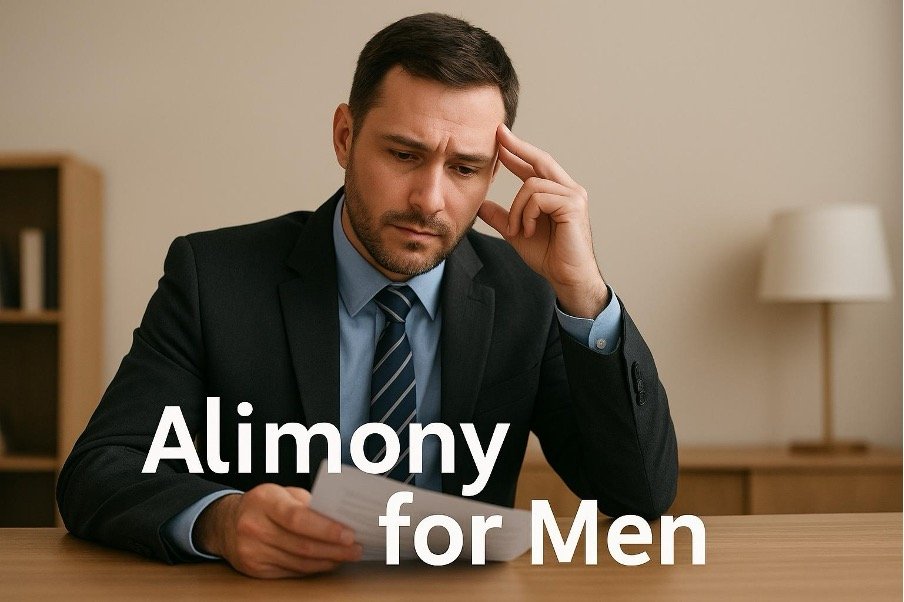Introduction
The debate over divorce and economic commitment has been characterized as a gender issue. During several decades, the men were all but the ones who were ordered to pay spousal support, and the females were the recipients. However, the reality is different as modern households have changed that was always assumed to be the case. Alimony has taken a new dimension with the evolving family setups, the increasing number of women joining and succeeding in the labor market, as well as the increasing number of men as primary care givers.
The concept of men receiving spousal support in case of a divorce is spreading, and it is defying both cultural norms and legal precedents. When a person wants to obtain a fair and balanced disposition when a marriage has ended, it is vital to understand how courts treat alimony for men today.
Changing Gender Roles in Marriage and Divorce
The changing gender roles in society is one of the most important factors contributing to the change in the laws of alimony. During previous decades, it was generally believed that the males were the breadwinners, whereas females usually stayed in the home to take care of family and child care duties. Divorce cases illustrated such division of labor where women were given spousal support to enable them to be financially stable.
Today though, a large number of households have very different dynamics. More frequently, women are the more profitable members of a marriage, occasionally even the only earner. In the meantime, men have never been less likely than now to enter into care giving or part time jobs, eliminating their earning potential in the lifetimes. The courts are acknowledging such changes and thus, these changes are making spousal support no longer gender-specific. Rather, financial need and contribution to the marriage took the centre stage. This has made space where males are given their fair share of support where need be.
Common Misconceptions About Alimony
It is also after these changes that the discussion is still in the mist. Another unawareness is that alimony is some sort of punishment to the higher earning spouse but in reality this is not the case, and the main aim of alimony is to avoid hardships. The other myth is that men do not or are not supposed to require assistance since they are supposed to be financially independent. This stereotype is entrenched in old masculinity and independence concepts, and it is hard to get the male gender to freely seek what they might be justifiably entitled to seek.
The stigma may also have an effect in the perception of the situation by friends, family, and even professionals. A man who is demanding alimony can get judged or mocked, an extra emotional strain in an already stressful action. It is important to bust these myths, as when it comes to family law fairness, both men and women should be equally accessible to financial redress, in the event of marriage breakdown.
Legal Standards for Awarding Support
The process of determining the alimony relies on different legal considerations which intend to bring forth a just finding to both parties. Although laws differ in jurisdiction, courts normally give weight on factors like:
- The length of the marriage
- The earnings and earning capacity of both the spouses.
- Donations to the home, financial or non-financial.
- Trades made by one partner to the other in terms of profession or education.
- The mode of everyday life that has been set in marriage.
An instance of this is a man who left his career to go and take care of kids as he put up with the hectic career of his spouse. On the same note, when a man makes substantially less than his former spouse and is unable to sustain a similar standard of living, alimony may be given out by the court. These rulings underscore the fact that the purpose of the law is not to compensate or punish but guarantee equity and economic sustainability of a relationship once a marriage is concluded.
Emotional and Social Challenges
Outside the courtroom, there are other emotional and social issues that men encounter in requesting alimony. The process of divorce is commonly full of loss, stress and uncertainty. It can be further intensified by the fact that it is a layer of seeking financial assistance, which is, according to social norms, implying that men must always be the breadwinners.
There are men who do not even file support at all since they are afraid of being called weak or dependent. Some might take less than they deserve to ensure that their pride is not hurt or because they do not want to confront something. These emotional obstacles may have long-term financial implications and particularly when the man may have lost years of income potential to the marriage.
These problems can be dealt with through awareness and discourse. The more the society gets used to the notion of men as recipients of alimony when they should, the less embarrassing it is that people would be able to seek fair results with no fear.
The Role of Legal Guidance
Divorce processes are usually complex and spousal support is one factor that is usually the most controversial. Being a legal expert who had legal advice provided to him allows a person to know their rights and to present cases in the most effective way. The lawyers help to collect facts of financial necessity, record gifts towards the marriage and present a fair compromise in court.
In the case of men specifically, professional representation makes sure that their appeals are not ignored based on the stereotypes still in existence. Although each case is unique, a good lawyer could guide the client through the intricacies of the juridical procedure, settle the cases, and ensure their long-term financial safety. This advice is particularly handy when children, property and other financial demands are also involved.
Future Outlook on Alimony and Gender Equity
In the future, alimony treatment will probably be more gender neutral. With the increasing number of cases where men are the recipients of support courts will keep coming up with precedents that portray the realities of today and not the old traditions. This change reflects the larger social trends toward equality, where financial fairness cannot be based upon gender.
Besides, the cultural discourse of divorce is indeed changing. In the same way that society has been made more hospitable to stay-at-home-father families and two-income families, it is now coming to accept that men are also vulnerable even after divorce and may require financial assistance to restart their lives. These developments indicate that alimony in the future will be thought of in terms of fairness and necessity, and not stereotypes or assumptions.
Conclusion
The changing history of spousal support explains a vital fact that the financial fairness in the divorce does not seem a gendered problem but a human one. Men, also as women, might find themselves in situations where support is not only very justified but also needed to restore sanity following a failed marriage. Alimony to men is becoming more and more recognized by the legal system, though it is still marred by misconceptions and stigma. The closer to a more balanced and fair view of family law the society is, with the emphasis not on old colonial expectations but actual equality of all.


